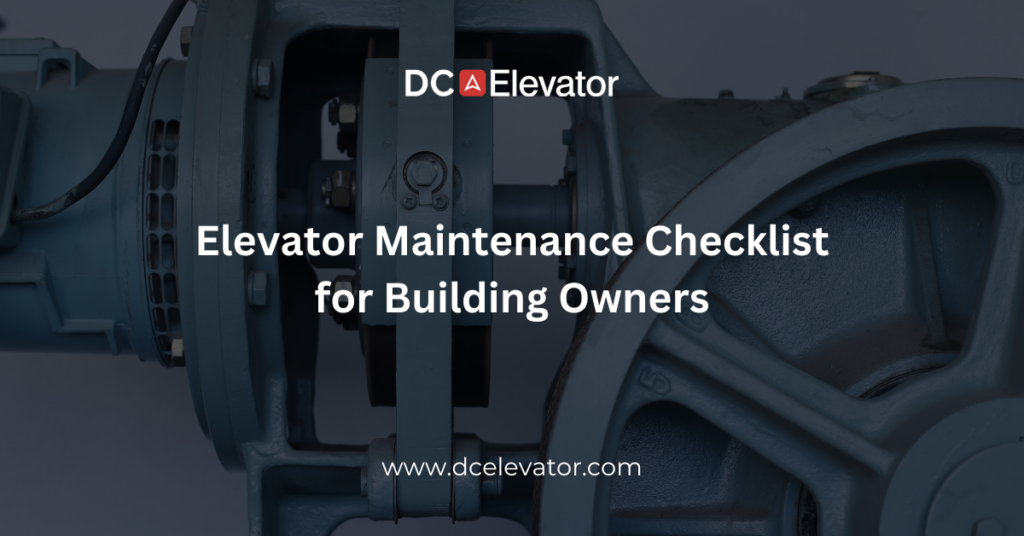Owning a building with elevators comes with the responsibility of ensuring their proper maintenance and safe operation. Regular elevator maintenance not only ensures the safety of the occupants but also extends the lifespan of the elevator system. To help building owners stay on top of their elevator maintenance tasks, we’ve put together a comprehensive checklist
1. Schedule Regular Inspections
- Set up a regular inspection schedule with a certified elevator maintenance company. The frequency of inspections may vary, but a general guideline is to have monthly, quarterly, and annual inspections.
- Make sure the maintenance company checks for any signs of wear and tear, strange noises, or irregularities during inspections.
2. Check for Smooth Operation
- Test the elevator for smooth operation. It should start, stop, and level properly without any jerks or sudden movements.
- Ensure that the doors open and close smoothly and don’t exhibit any unusual behavior.
3. Inspect Safety Features
- Verify that emergency buttons, alarms, and communication systems are functioning correctly.
- Test the emergency lighting inside the elevator and in the building’s elevator lobby.
4. Examine Door Systems
- Regularly inspect the door sensors to ensure they are functioning correctly and not posing any safety hazards.
- Lubricate door tracks and hinges as recommended by the manufacturer to prevent squeaks and ensure smooth movement.
5. Check for Proper Leveling
- The elevator should consistently stop level with the floor. Improper leveling can cause tripping hazards and discomfort for users.
6. Inspect the Machine Room
- If your building has a machine room, ensure it is clean, well-ventilated, and free from any debris that might interfere with the elevator’s operation.
7. Safety Brakes and Over-Speed Governors
- Safety brakes and over-speed governors are crucial components for preventing accidents. Make sure you service provider regularly test these systems as recommended by the manufacturer.
8. Review Maintenance Records
- Keep thorough records of all maintenance and repairs performed on the elevator. This documentation can be valuable for tracking the elevator’s performance over time and for potential resale of the property.
9. Address Repairs Promptly
- If any issues or abnormalities are identified during inspections, address them promptly to avoid escalation of the problem. Ignoring minor issues can lead to major malfunctions.
10. Stay Updated with Regulations
- Be aware of relevant elevator codes and regulations in your region. Comply with these standards to ensure the safety and legal operation of your elevators.
11. Educate Building Occupants
- Educate building occupants about proper elevator usage, such as not overloading the elevator, and encourage them to report any unusual behavior they experience.
12. Consider Modernization
- If your elevators are aging, consider modernizing them with newer technology and safety features. Modernization can enhance efficiency, safety, and user experience.
